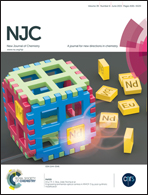MALDI mass spectrometry for probing the anti- staphylococcal capability of TiO2 nanoparticles via near-UV and laser irradiation†
Abstract
We report the use of MALDI-MS as an effective tool in investigating the anti-staphylococcal property of TiO2 nanoparticles under near-UV and for the first time also under laser irradiation. Since near-UV based photocatalytic activity is toxic to biological cells, it is not feasible for biological studies and hence we propose a more biologically friendly system such as laser irradiation for inhibition of the clinical pathogen S. aureus. In-house prepared anatase phase TiO2 nanoparticles were incubated with the bacterial pathogen and irradiated using near-UV and laser. The anti-staphylococcal effect was studied using MALDI-MS as an analytical technique in addition to the conventional plate counting method and high resolution TEM. The results showed that the anatase TiO2 nanoparticles at the concentrations of 0.5 μg mL−1 and 1.5 μg mL−1 showed anti-staphylococcal activity under laser irradiation (one order reduction in bacterial counts) and near-UV irradiation (five order inhibition) compared to the control (no TiO2 NPs) (107 cfu per mL). The application of laser light offers a new prospective for the replacement of near-UV light for sensitive experiments involving biological applications to avoid damage to normal cells. In this study, the ability of TiO2 nanoparticles (NPs) under laser and near UV irradiation leading to the anti-staphylococcal activity was demonstrated using MALDI-MS as the analytical probing tool.


 Please wait while we load your content...
Please wait while we load your content...